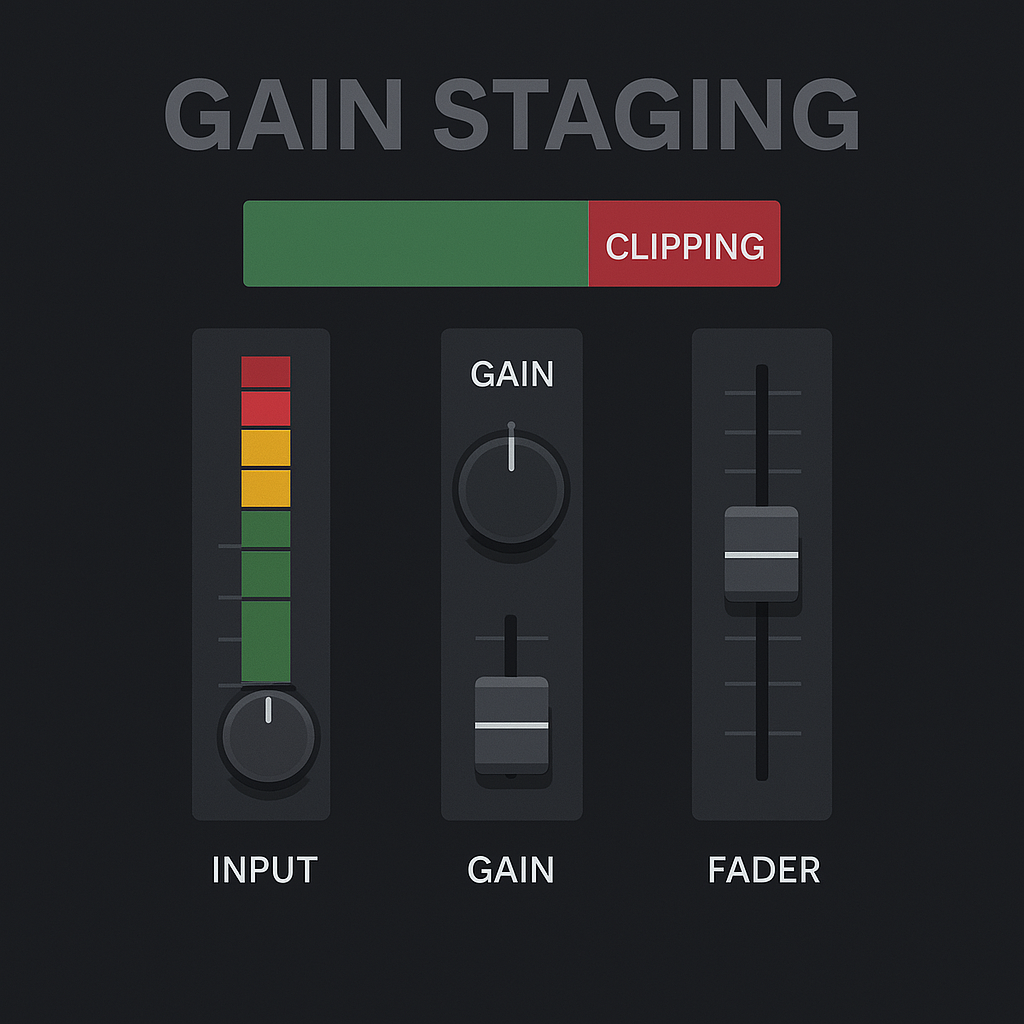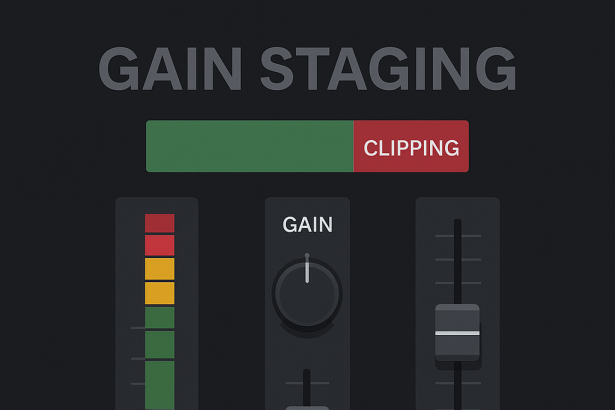Gain Staging in Music Production: The Key to Clean, Professional Mixes
Introduction
If your mixes sound muddy, distorted, or just “off,” the problem might not be your EQ or compression—it might be your gain staging. This foundational step ensures every part of your signal chain receives the right volume, from recording to mixing and mastering. Whether you’re a beginner or self-taught producer, understanding gain staging will clean up your mix and give your plugins room to work properly.
What Is Gain Staging?
Gain staging is the process of controlling audio levels at each stage of the signal path. The goal is to avoid distortion, clipping, and noise by making sure the signal isn’t too loud or too soft when passing through effects, plugins, or faders.
Why it matters:
Prevents unwanted digital clipping
Gives compressors, EQs, and saturation plugins optimal signal input
Reduces noise and improves headroom
Sets a solid foundation for clean, pro-level mixing
Where Gain Staging Happens
Input Gain – Level at which a signal is recorded or enters your DAW
Clip Gain / Pre-Fader – Adjusting audio region gain before hitting plugins
Plugin Chain Gain – Each plugin should receive and output healthy levels
Channel Fader – Controls level going to buses or master
Bus/Master Output – The final gain stage before export
🎯 Your goal: Maintain a consistent level, ideally around -18 dBFS RMS (or -12 dB peak) at each stage.
How to Gain Stage in Your DAW (Step-by-Step)
Check Peak and RMS Levels – Use a level meter to measure the signal. Avoid peaks above -6 dBFS during mixing.
Adjust Clip Gain – Use region gain or trim to bring levels to a healthy range before plugins.
Level Plugin Chains – Make sure your EQ or compressor isn’t boosting or cutting too hard.
Watch the Meters – Don’t mix with tracks constantly hitting red.
Control the Master Bus – Leave headroom (around -6 dB) for mastering.

Useful Gain Staging Tools
Free Plugins
VUMT mini by Klanghelm – Emulates analog VU meters for consistent gain control
https://klanghelm.com/contents/products/VUMT/VUMT.php
MLoudnessAnalyzer – Analyze LUFS, peaks, and RMS
https://www.meldaproduction.com/MLoudnessAnalyzer
Youlean Loudness Meter – Broadcast and mastering-level meter
https://youlean.co/youlean-loudness-meter/
Paid Plugins
MeterPlugs Loudness Meter – Pro metering tools for gain and loudness
https://www.meterplugs.com/loudness-meter
iZotope Insight 2 – Deep metering, phase, loudness, stereo image
https://www.izotope.com/en/products/insight.html
Tips for Better Gain Staging
✅ Avoid gain stacking – Don’t boost gain at every plugin
✅ Use trim tools – Keep plugin input/output levels balanced
✅ Mix at low volume – Prevent ear fatigue and overcompensation
✅ Leave mastering headroom – Don’t normalize to 0 dBFS
Conclusion
Gain staging is the invisible glue that keeps your entire mix stable and balanced. It’s not flashy, but it’s essential for achieving clarity, punch, and power in your productions. When every track is gain staged correctly, your EQs behave better, your compressors respond properly, and your master stays clean and professional.
![]()














